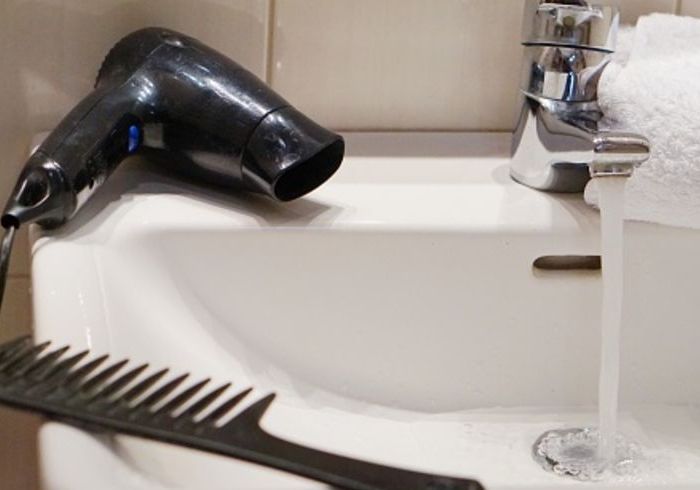Categories: Safety precautions
Number of views: 3271
Comments on the article: 0
Water and electric current
For a substance to be able to conduct an electric current, it must have charged particles capable of moving freely through its entire volume under the action of an applied electric field. In metal conductors, for example, such charged particles are free electrons, and in electrolytes, positively and negatively charged ions.
Dielectrics do not conduct a constant electric current at all, since although there are charged particles in their structure, they are connected to each other and cannot move freely, forming a current.
But even dielectrics pass alternating current, this is called a bias current, for example, a capacitor in an alternating current circuit at a certain frequency will conduct current as if it were a conductor.

Plain untreated water
As for ordinary water (river, tap, especially marine, etc.), it always contains dissolved mineral substances, which, under the influence of an applied electric field, decompose into ions that can move like in an electrolyte.
For this reason, ordinary untreated water conducts current, behaving like a weak electrolyte. If you try to pass a current through such water, then for a short time it will go through it, albeit weakly.
Theoretically Perfectly Clear Water
Theoretically, if water is completely cleaned of impurities, that is, absolutely all substances, including salts, gases, acid residues, are removed from its volume, then it will become an insulator and will behave like an insulator.
There will be no ions in it that can move under the influence of an electric field and form a current, and the water molecules themselves are electrically neutral. Such water could be used, for example, as a dielectric between capacitor plates.

Real distilled water
But in reality, even distilled water (water purified by evaporation followed by condensation of steam) is not absolutely pure.
There is Russian GOST 6709-72, which determines the mass concentration of the residue of impurities in such distilled water - no more than 5 mg per liter, and a minimum specific resistance of at least 2 kOhm * m.
That is, a cube of distilled water with a side length of 1 meter, with electrodes attached to it at the edges, will have a resistance of at least 2 kOhm. And if you imagine distilled water poured on the floor, say, in the volume of one glass (200 ml), then its resistance in the best case will be 200 kOhm. We can say that this is practically a dielectric.
It makes no sense to try to use such water as a direct current conductor. From this point of view, distilled water does not conduct electric current. It is usually used to correct the density of electrolytes.

Why you should beware of contact of any water with electricity
However, people are not in vain afraid of contact of any water with electricity, especially with alternating voltage from the outlet. Even the mains voltage from a wire that has fallen into a puddle of water that people might accidentally step on can cause a milliampere alternating current, which will be enough to cause harm to the body.
The human body and the phase from the outlet, connected through a puddle of spilled water, form a chain with reactive elements, and if a person accidentally touches a grounded object, then he will be shocked. This is why contact between electricity and water must be avoided. As you know, with distilled water the risk of harm is less, but it still remains. Therefore, it is better to avoid getting any water on electrical appliances.
See also at i.electricianexp.com
:
